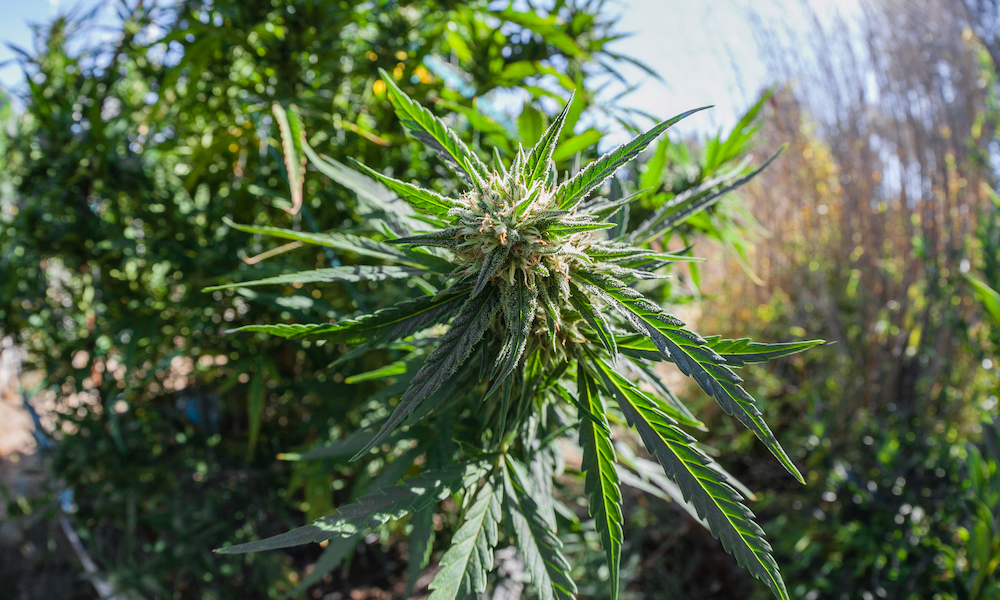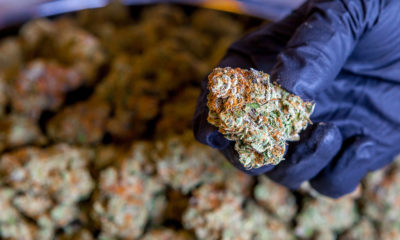
Politics
Analysis Optimistic About Progress in the Asian Cannabis Market
A new report by the British think-tank Prohibition Partners foresees a $5.8 billion cannabis market in Asia by 2024 — if the tentative seeds of liberalization across the continent bear fruit.
Cannabis is deeply rooted in the continent of Asia, where a cultural, medicinal and spiritual relationship with the plant stretches back into remote antiquity. The harsh prohibition regimes in many Asian countries are likely to be pried open over the next years, allowing for fast growth of a regulated cannabis market.
These are the optimistic findings of The Asian Cannabis Report, newly released by U.K.-based international cannabis industry analysts Prohibition Partners — an ironic name, as the consultancy’s mission is to monitor and encourage the growth of the sector as it emerges into the incipient post-prohibition world.
Signs of Hope in Southeast Asia
The report notes significant progress, especially in the nations of Southeast Asia, traditionally some of the most conservative on the continent. In Thailand, the legalization of medical cannabis, approved by the country’s national legislature last year, took effect this February by royal decree (making the law official).
Also in February, Malaysia’s health ministry stated that it would consider allowing the use of medical cannabis. This reconsideration was prompted by last year’s controversy after a young Malaysian man was sentenced to death by hanging for providing cannabis oil to patients. Following a global outcry over this injustice, he was taken off death row. The Malaysian government pledged to abolish the death penalty and has now openly broached a reform of its cannabis law.
And February also saw a positive development in Singapore, where the government announced its intention to allow the legal sale and use of pharmaceutical products containing cannabinoids.
Cannabis was largely legal and used in traditional medicines across the region until the 1930s, and prohibitionist policies were adopted at the behest of the United Nations and world powers. Now the international consensus is changing; the report notes the World Health Organization‘s recent call for cannabis to be rescheduled under the relevant international treaties. “This marks a significant U-turn on a doctrine that has been codified in international and local laws for the past 60 years and could be the key to fast-tracking [legalization] of Asia’s medicinal cannabis market.”
Fudging the Philippines
The Philippines represent a strange case, with a medical marijuana bill pending even as President Rodrigo Duterte pursues his draconian and murderous anti-drug crackdown. On this sensitive question, the report could have used a closer edit. It implies on page 16 that the Philippines’ Compassionate Medical Cannabis Act has already passed. On page 31, it clarifies that the law remains pending in the country’s legislature. In fact, it passed in the lower house of the Philippine Congress in February, but Duterte now says he opposes the bill, reversing his previous stance.
The Philippines and Cambodia alike are given credit for having abolished the death penalty, which has been widely used for drug crimes in Southeast Asian nations. But the report doesn’t mention that Duterte is now hoping to restore the death penalty, which was abolished in 2006, long before he took office. In fact, this has become a key question in the Philippines’ imminent mid-term elections, which could see the country diving deeper still into drug war dystopia.
Also given perhaps too much credit is Myanmar. Text excerpted in a big pull-quote hails its effort to “adopt an evidence-based focus that addresses the needs of people and their health by reducing the negative effects of drug production, trafficking
China and India in Cannabis Race?
Another strange contradiction is China, the economic giant of the region. The People’s Republic has established “global dominance in hemp,” producing nearly half the world’s supply — and increasingly for CBD production rather than traditional industrial purposes. China is the well-established world leader in those traditional industrial applications as the largest global exporter of hemp paper and textiles.
Here too, there is some confusion. We’re told on page 35 that the “bulk” of Chinese hemp cultivation is in Shandong and Yunnan provinces. Yet most sources indicate that the two major hemp-producing provinces are Yunnan and Heilongjiang. In fact, the report says as much on page 52, contradicting itself. Legalization of hemp appears to have been phased in at the provincial level since Yunnan led the way a decade ago. A national law regulating the industry only seems to have been instated with the anti-drug bill passed by the People’s Congress in May 2017.
The report’s contention that China “currently produces over half of the world’s cannabis” will raise eyebrows among those aware that the United Kingdom is generally held to be the world’s top producer, thanks to some powerful pharmaceutical interests there. This touches on the nomenclature dispute — the report eschews the word “marijuana” in
Additionally, China holds 309 of the current 606 international cannabis-related patents that have been filed, including methods of administering the drug, according to data from the U.N. World Intellectual Property Organization (WIPO). Companies like the Yunnan Industrial Cannabis Sativa Co and Beijing-based Hemp Investment Group have global designs on the CBD market. Yet, as the report notes, without particular emphasis, herbaceous cannabis is so harshly proscribed in China that possession can still land you on death row.
The report portrays India, which legalized hemp cultivation in 1985, as poised to challenge China’s hegemony in the industry. Although hemp cultivation is legal only for use in the textile industry, the sector is booming in the northern states of Uttarakhand and Uttar Pradesh. Certainly, competition in hemp production would be a far healthier outlet for the mutual rivalry between India and China than the current nuclear arms race between the two Asian giants.
Regarding tolerance of herbaceous cannabis, the report rather overstates things, writing that “
Challenging Recalcitrant Regimes
Listed as “not ready for change” are the Central Asian countries (Kazakhstan, Kyrgyzstan, Tajikistan, Turkmenistan and Uzbekistan), and the Arab nations of Western Asia.
The report sidesteps the strange misconceptions about North Korea having a tolerant cannabis policy: “The current legality of medicinal and recreational cannabis is unknown in North Korea. With such little information available, we have taken a conservative approach to market [liberalization].”
South Korea, however, has moved to permit pharmaceutical products made with cannabinoids, as has Japan. A Korean Cannabinoid Association has emerged to advocate for broader use.
Other such activist efforts are noted, such as Thailand’s Highland Network and India’s Great Legalisation Movement. The Malaysian Consumers Association has also stepped forward in support of legalizing medical cannabis.
Prohibition Partners projects that the Asian medical cannabis market could be worth an estimated $5.8 billion by 2024 — “assuming that it is [legalized] in the countries profiled in this report within this timeframe.” Even with all the hopeful signs we now see, which would have been unthinkable just a year or two ago, that is still a rather important caveat.
TELL US, where do you see the global cannabis market expanding next?





















